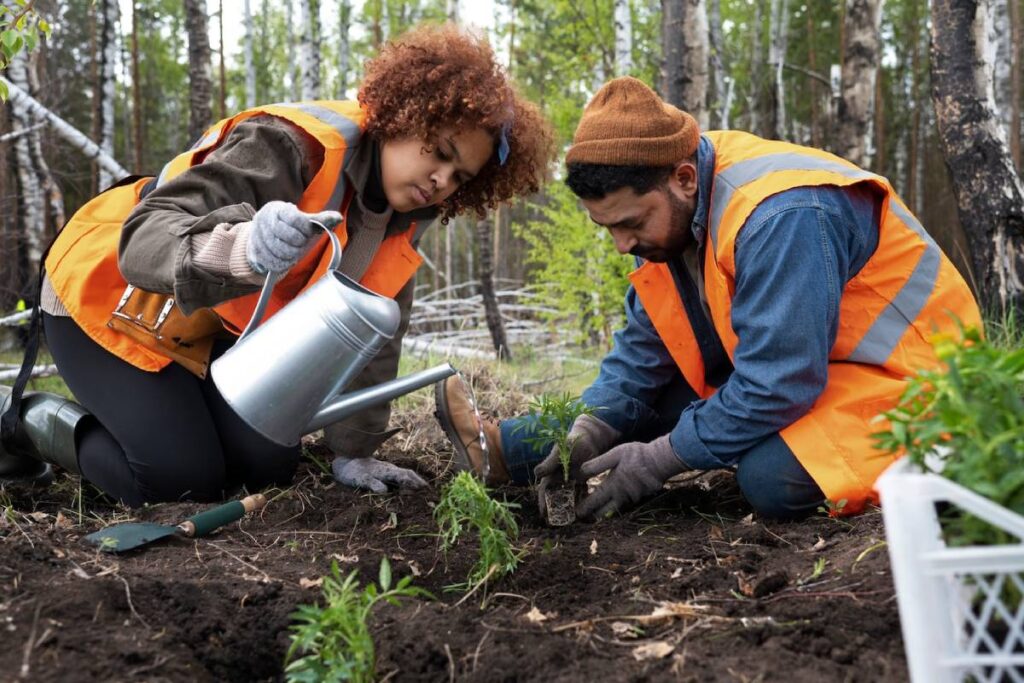Travel Blogs

What Is Regenerative Travel and Why It Matters
You may have heard about sustainable travel, eco-tourism, or carbon offsetting. However, there’s a newer and more dynamic movement emerging — regenerative tourism. This approach goes beyond merely reducing harm. It actively seeks to enhance and improve places after we have visited them, leaving a positive impact in our wake.
Regenerative travel centres around the concept of giving back to the world. It actively supports the natural environment, aids local communities, and preserves cultural traditions. As our planet faces climate change and too many tourists visit fragile areas, this approach is both needed and timely.
This guide explains what regenerative travel means, why it matters, and how you can take part. Whether you’re planning a weekend trip or a longer stay, you’ll discover how to be an eco-friendly traveller and make a positive impact.
What Is Regenerative Travel?

More Than Just “Doing Less Harm”
Sustainable tourism focuses on reducing damage. Regenerative tourism goes further and asks:
Can our travels leave places healthier than before we arrived?
Examples include planting trees, supporting local artists, or helping restore coral reefs. It’s all about giving back.
Regenerative travel supports:
- Local businesses owned by the community
- Nature through hands-on restoration work
- Culture by preserving local customs and stories
- Meaningful experiences that grow your understanding
Key Ideas of Regenerative Travel:
- Respect the place: Every destination has its own story
- Give more than you take: Think about your impact
- Let locals lead: Listen, learn, and support their choices
- Think long-term: Help build a better future
This kind of travel is about connection, not consumption.
Why Regenerative Travel Is Important Now
1. The Earth Needs Our Help
Tourism creates around 8% of the world’s carbon emissions. As temperatures rise and habitats shrink, we can’t afford to travel the same old way.
We need a new kind of travel — one that restores instead of ruins.
2. Too Many Tourists Cause Real Harm
Famous places like Venice and Barcelona struggle with overtourism. Crowds can damage landmarks, pollute nature, and push out local residents.
Regenerative tourism is slower, smaller, and more respectful.
3. Locals Deserve the Benefits
In many places, tourism profits go to big companies. Locals get little in return. Regenerative travel puts communities first — supporting jobs, traditions, and well-being.
4. Travellers Want More Purpose
Many of us now seek experiences that matter. We want to learn, connect, and leave a mark — in a good way. Regenerative travel meets that need.
Real-Life Examples of Regenerative Travel
Sinal do Vale, Brazil
Guests help plant trees, learn farming methods, and support forest healing. The project creates jobs and restores the land.
Bhutan’s Visitor Model
Bhutan limits visitor numbers and charges a daily fee. The money funds health, education, and nature protection.
Tuscan Farm Stays
Travellers in rural Italy join in olive picking or cheese making. It keeps old traditions alive and supports small farms.
Maldives Reef Projects
Some island resorts let guests help with coral planting. This restores reefs and teaches visitors about ocean life.
These places show that tourism can do good — if it’s thoughtful and fair.
How to Travel Regeneratively
1. Choose the Right Place to Stay

- Pick local hotels or homestays
- Look for green practices like solar energy or recycling
- Choose places that invest in their community
2. Join Meaningful Activities
Instead of standard tours, try:
- Conservation or clean-up events
- Cooking or craft workshops led by locals
- Historical walks with community guides
These create real memories — and real change.
3. Travel More Slowly
- Stay longer in fewer spots
- Use trains or buses instead of planes
- Walk or cycle to explore nearby areas
This lowers your footprint and gives you deeper experiences.
4. Respect People and Culture
- Learn greetings and customs
- Ask before taking photos
- Buy crafts directly from makers
- Pay fair prices and avoid bargaining too hard
5. Offset What You Can’t Avoid
Even with care, travel still impacts the planet. Use trusted services to balance emissions. You can also donate to:
- Tree planting groups
- Clean energy projects
- Wildlife protection charities
Common Myths
“It’s Too Pricey”
Not true. Many eco-stays and local tours are budget-friendly. Travelling slowly also saves money on transport and fees.
“It’s Only About Volunteering”
Volunteering is one part. But regenerative travel also includes where you stay, what you do, and how you behave.
“It’s Not for Everyone”
Whether you’re solo or with family, on a budget or splurging, there are options. It’s about choices, not labels.
Resources to Help You Start
- Regenerative Travel: Find eco-stays and learn more
- Intrepid Travel & G Adventures: Certified ethical travel companies
- WWOOF & Workaway: Stay and help in exchange for food and lodging
- Booking.com: Use their “sustainable” filter
- Earth Changers & Green Pearls: Curate inspiring green trips
Quick tip: Ask hosts how they help their area. If they’re doing real work, they’ll be proud to share.
Travel That Gives Back

Regenerative travel isn’t just a trendy term. It offers a kinder, smarter way to explore our beautiful planet. This kind of travel helps nature heal and supports local communities’ well-being and prosperity.
Perfection is not a requirement. What truly matters is demonstrating genuine care. Even small actions, like supporting local businesses or learning about a unique custom, can make a big difference. Small actions can add up to create real change in your community and beyond. Every thoughtful choice contributes to a larger positive outcome.
So, what will your next journey look like?









